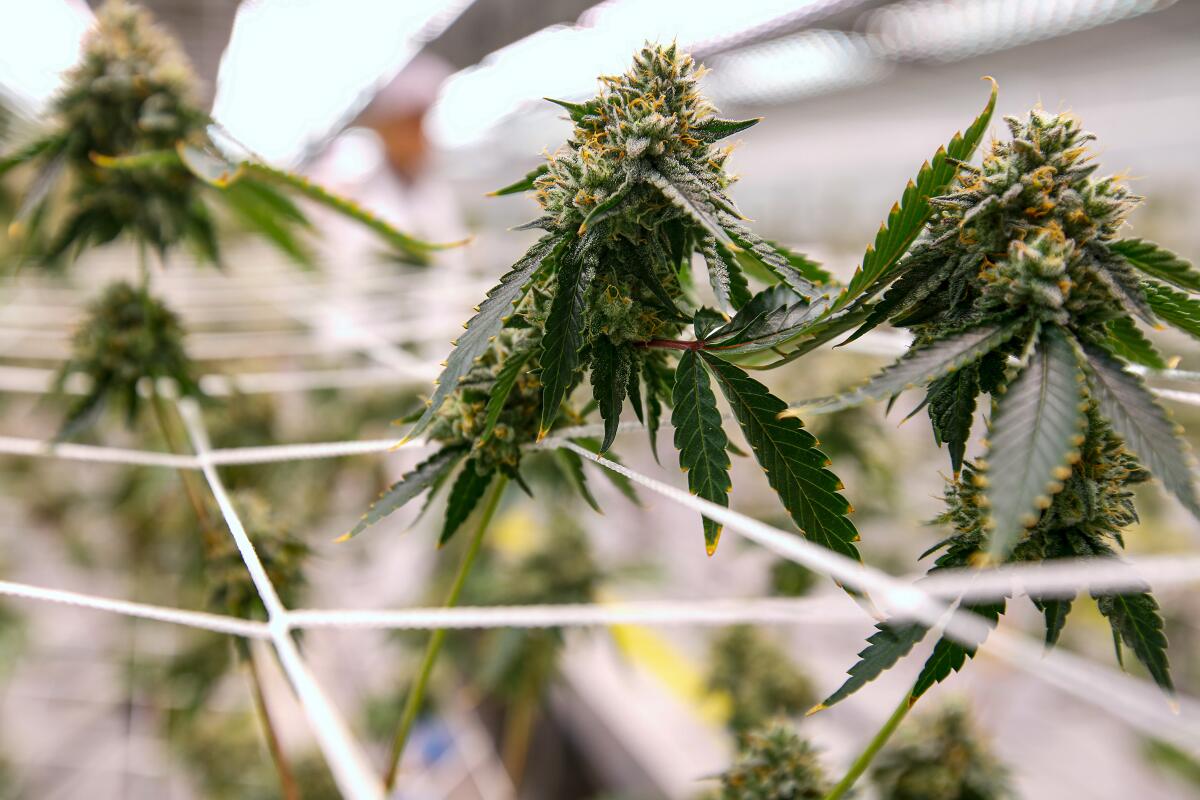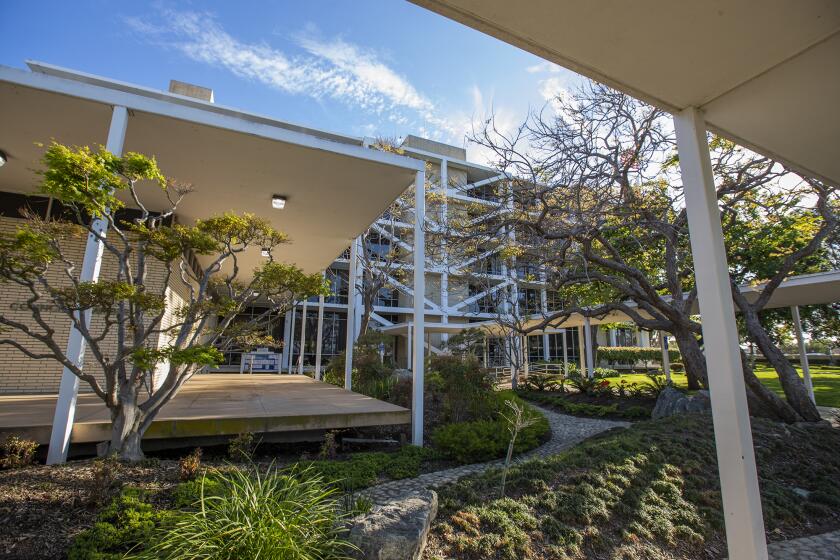Huntington Beach, still weeding out details, puts cannabis tax on November ballot

The Huntington Beach City Council has asked voters to approve a general tax on cannabis sales in the city, but it stopped short of pushing through another ballot measure asking if the city should allow and regulate retail and nonretail cannabis businesses.
The panel voted 5-2 on Tuesday night to put the general tax on the November ballot. Mayor Pro Tem Mike Posey and Councilman Erik Peterson represented the “no” votes.
A simple majority of voters would need to approve the cannabis tax, which would be up to 1% for nonretailers and up to 6% for retailers. A majority of voters — 64.58% — voted to approve a special tax measure, Measure A, on last month’s primary ballot. But that measure required two-thirds voter support because it was a special tax, so it narrowly failed.
“We’re confident that the exact same ballot measure with a 50% threshold will pass, since 65% of the people voted for it in June,” Councilman Dan Kalmick said. “We’re going to continue to do outreach, and I suspect that we can move through this by the end of the year and have an ordinance done. My goal would be to have it done before residents vote, but it doesn’t really matter. We’re elected to make the laws of the city, so I’m confident that with enough public outreach we can get to some semblance of a reasonable policy.”
It was clear listening to Tuesday’s dialogue that the council needed more time to deliberate the specifics of bringing cannabis to Surf City, which could net the city an estimated $300,000 to $600,000 a year if the tax is approved.
Much of the conversation centered around buffers between the pot shops and schools and/or parks, and if there should also be a residential buffer. At its meeting on July 5, the council took a straw vote indicating that it could support buffers of at least 1,000 feet from all schools, parks, daycare centers and youth centers.
According to GIS maps prepared by city staff, a buffer of 600 feet from elementary schools, parks, daycare centers and youth centers would leave 491 parcels available for possible retail (dispensary) cannabis sales. But if the buffer was extended to 1,000 feet, the number of parcels available shrinks to 278.
And residential buffers would likely net a number that’s even much smaller than that, or even zero.
“My back-of-the-envelope map [says] if you do a residential buffer, you effectively eliminate all property in Huntington Beach,” Kalmick said. “Nothing is doubly land-locked; we don’t have a lot of Uzbekistans. All our commercial property parcels abut residential [properties]. You’ll end up with one or two parcels maybe on Beach Boulevard that have a bigger property around them.”
Council members were poised Tuesday to approve language asking voters to consider exempting certain development projects from a citywide vote under Measure Y. Instead, they pushed discussion to Aug. 2.
The council received dozens of emails regarding cannabis buffers in the city and also heard from people familiar with the cannabis industry. A letter signed by Ocean View School District Supt. Michael Conroy and board President Gina Clayton-Tarvin requested the council keep the buffer at 1,000 feet for all schools.
Mike Moussalli, a Huntington Beach resident who operates a cannabis businesses in Costa Mesa, argued Tuesday night during public comments that the businesses needed to be in commercial/retail areas.
“As somebody who shops at Pacific City all the time and on Main Street all the time, I want to enjoy where I’m shopping,” Moussalli said. “I don’t want to feel like I’m going to the industrial part of town to get my product, my cannabis. It’s the same for our business as anyone else — it’s really about the experience.”
He also suggested keeping the buffers at mostly 600 feet, not 1,000 feet.
“We want these businesses to be here long-term and be successful,” he said. “If there’s a land rush and we pay more for rent, it makes it harder for us to stay in business.”
Councilwoman Kim Carr stressed the need for more town halls and community meetings. She cited a November 2021 phone survey of 400 Huntington Beach residents that indicated they strongly wanted a minimum buffer of 600 feet for schools, parks and other youth sites.
“We’ve heard a lot regarding buffers from the industry,” she said. “Residents have a much different approach to it ... and I do think that we should be considering a residential buffer. We need to take all voices into consideration when crafting these ordinances.”
She also expressed concern that cannabis dispensaries could impact the city meeting its required Regional Housing Needs Allocation numbers — more than 13,000 residential units are required to be zoned for between last October through October 2029.
“There’s a little bit of conflict there,” Carr said. “The state has not mandated us to have cannabis in the city, but it has for housing. That said, I still think we can do both.”
Peterson said he felt like the council was rushing to make a decision on cannabis, though Kalmick disputed that claim.
“The only rush that I’ve had is to make sure that we had a tax in place as we get through it,” he said. “We’ve had six meetings on this, five public meetings for the council and the town hall.”
Residents can submit questions or comments to [email protected].
All the latest on Orange County from Orange County.
Get our free TimesOC newsletter.
You may occasionally receive promotional content from the Daily Pilot.





